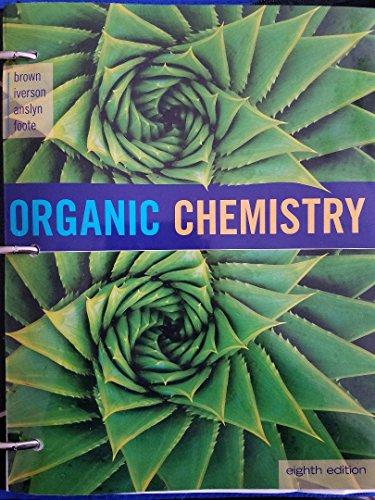
(a)
Interpretation:
The way by which tolazamide is synthesized has to be shown.
Concept introduction:
Reaction of an ester with ammonia or an
Treatment of an ester with ammonia or a primary or secondary amine gives an amide.
The nucleophilic addition of the ammonia or amine to the carbonyl carbon occurs followed by a proton transfer and a tetrahedral addition intermediate is formed. The intermediate can directly alkoxide and lose a proton to the alkoxide to give products.

(b)
Interpretation:
The way by which Gliclazide is synthesized has to be shown.
Concept introduction:
Reaction of an ester with ammonia or an amine:
Treatment of an ester with ammonia or a primary or secondary amine gives an amide.
The nucleophilic addition of the ammonia or amine to the carbonyl carbon occurs followed by a proton transfer and a tetrahedral addition intermediate is formed. The intermediate can directly alkoxide and lose a proton to the alkoxide to give products.

Want to see the full answer?
Check out a sample textbook solution
Chapter 18 Solutions
Organic Chemistry, Loose-leaf Version
- Why do you wash the dichloromethane solution of your reductive amination product with sodium bicarbonate, rather than dilute aqueous HCl? a) Sodium bicarbonate is a good method of removing aldehydes from organic solvent.b) The amine product will be protonated by acid and remain in the aqueous layer as a salt.c) Sodium bicarbonate transfers the amine starting material into the aqueous layer.d) Sodium bicarbonate reacts with leftover NaBH(OAc)3 and removes it from the mixture.arrow_forwardShow how to synthesize the following amines from the indicated starting materials below. Each of the final products may require several sequential steps. Draw the structure for each of the steps and show the reagents required. Starting material Final product b) Benzene m-bromoaniline c) ethylbenzene p-ethylaniline + o-ethylaniline d) benzene p-bromoaniline + o-bromoanilinearrow_forwardEarly organic chemists used the Hofmann elimination reaction as the last step of a process known as a Hofmann degradation—a method used to identify amines. In a Hofmann degradation, an amine is methylated with excess methyl iodide in a basic solution, treated with silver oxide to convert the quaternary ammonium iodide to a quaternary ammonium hydroxide, and then heated to allow it to undergo a Hofmann elimination. Once the alkene product is identified, working backward gives the structure of the amine. Identify the amine in each of the following cases: a. 4-Methyl-2-pentene is obtained from the Hofmann degradation of a primary amine. b. 3-Methyl-1-butene is obtained from the Hofmann degradation of a primary amine. c. 2-Methyl-1-3-butadiene is obtained from two successive Hofmann degradations of a secondary amine.arrow_forward
- In the 1880's, Acetanilide, sold under the name Antifebrin, was widely used as a pain reliever and fever reducer. However, it had many adverse side effects, including cyanosis as a result of methemoglobinemia. The toxic side effects were the result of a small portion of acetanilide being hydrolyzed to aniline. Acetanilide was discontinued and replaced with phenacetin. Later studies show that both acetanilide and phenacetin are metabolized to acetaminophen. This metabolite, which we know as Tylenol, is responsible for the analgesic and antipyretic properties. Part 1: Show a detailed arrow pushing mechanism of the acid catalyzed hydrolysis of acetanilide to aniline Part 2: Propose a synthesis of Acetaminophen from phenol NH NH NH Phenacetin inophen Acetanilide Attach File Browse Local Files Browse Content Collectionarrow_forwardThe following compound used in perfumery has a violet-like scent. Propose a synthesis of this compound from benzene. 4-Isopropylacetophenonearrow_forwardCan pyridine form a diazonium salt and can quinoline and isoquinoline undergo electrophilic substitution on the benzenoid ring but nucleophilic substitution on the nitrogen ring?arrow_forward
- Propose a method to separate a mixture containing phenol, benzoic acid, naphthalene, and p-nitroaniline. Phenol is soluble in sodium hydroxide solution but insoluble in neutral water or sodium bicarbonate solution. Benzoic acid is soluble in either sodium hydroxide or sodium bicarbonate solutions. Write out the structures of the molecules in your scheme.arrow_forwardWrite the mechanisms for the following reactions: Decanoic acid + Ethyl alcohol Propanoic acid + Ethyl alcohol Salicylic acid + Benzyl alcohol Decanoic acid + 3-methyl-1-butanolarrow_forwardBarbiturates are prepared by treatment of diethyl malonate or a derivative of diethyl malonate with urea in the presence of sodium ethoxide as a catalyst. Following is an equation for the preparation of barbital, a long-duration hypnotic and sedative, from diethyl diethylmalonate an urea. Barbital is prescribed under one of a dozen or more trade names. Propose a mechanism for This reaction The pKa of barbital is 7.4. Which is the most acidic hydrogen in this molecule and how do you account for its acidity?arrow_forward
- Show how to prepare the following aromatic amines by aromatic nitration, followed by reduction. You may use benzene andtoluene as your aromatic starting materials. p-bromoanilinearrow_forwardTwo reactions occur when sodium hydroxide is added to methyl salicylate. One is immediate and one only occurs with reflux over time. What type of reaction occurs immediately and with which functional group on methyl salicylate does it react? What type of reaction occurs with reflux over time and with which functional group on methyl salicylate does it react?arrow_forwardWhy is methyl salicylate so easily absorbed through the skin?arrow_forward
 Organic ChemistryChemistryISBN:9781305580350Author:William H. Brown, Brent L. Iverson, Eric Anslyn, Christopher S. FootePublisher:Cengage Learning
Organic ChemistryChemistryISBN:9781305580350Author:William H. Brown, Brent L. Iverson, Eric Anslyn, Christopher S. FootePublisher:Cengage Learning Chemistry for Today: General, Organic, and Bioche...ChemistryISBN:9781305960060Author:Spencer L. Seager, Michael R. Slabaugh, Maren S. HansenPublisher:Cengage Learning
Chemistry for Today: General, Organic, and Bioche...ChemistryISBN:9781305960060Author:Spencer L. Seager, Michael R. Slabaugh, Maren S. HansenPublisher:Cengage Learning Introduction to General, Organic and BiochemistryChemistryISBN:9781285869759Author:Frederick A. Bettelheim, William H. Brown, Mary K. Campbell, Shawn O. Farrell, Omar TorresPublisher:Cengage Learning
Introduction to General, Organic and BiochemistryChemistryISBN:9781285869759Author:Frederick A. Bettelheim, William H. Brown, Mary K. Campbell, Shawn O. Farrell, Omar TorresPublisher:Cengage Learning EBK A SMALL SCALE APPROACH TO ORGANIC LChemistryISBN:9781305446021Author:LampmanPublisher:CENGAGE LEARNING - CONSIGNMENT
EBK A SMALL SCALE APPROACH TO ORGANIC LChemistryISBN:9781305446021Author:LampmanPublisher:CENGAGE LEARNING - CONSIGNMENT



